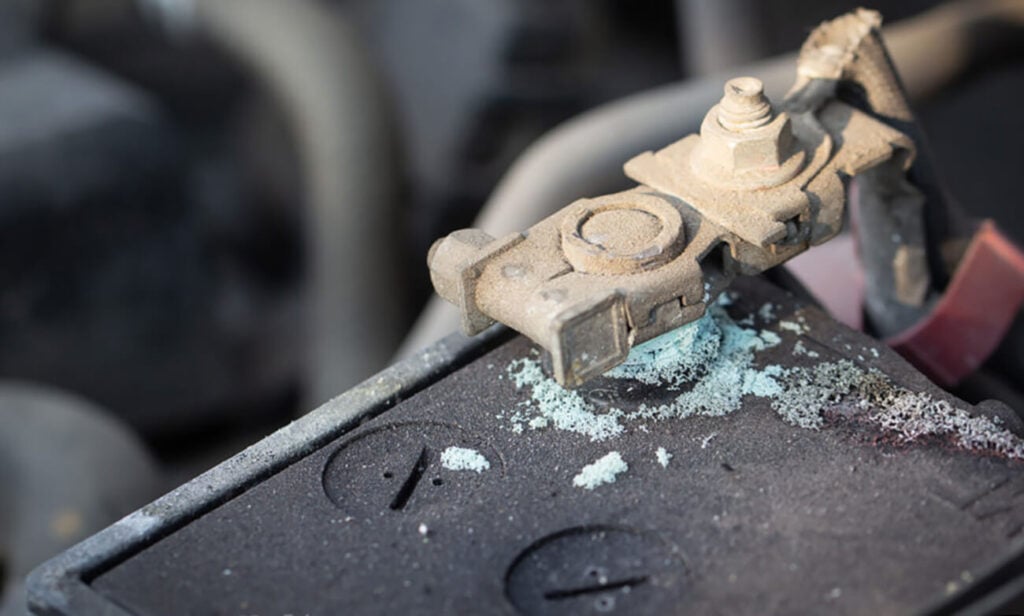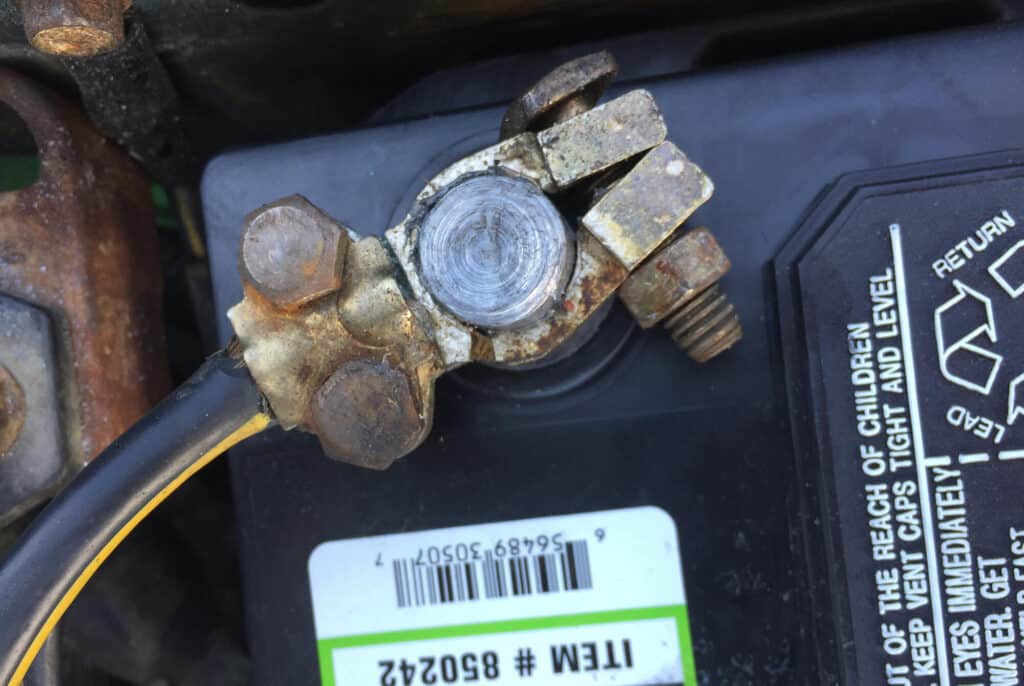Introduction: Understanding Battery Terminal Ends: The Unsung Heroes of Your Car’s Electrical System
The battery terminal ends of your car might seem like minor parts, but they’re crucial for the vehicle’s electrical functioning. These connectors ensure that power flows properly from the battery to the rest of the car. Think of them as the gatekeepers of energy, a bridge between the battery and everything else. A loose or corroded terminal end can bring an otherwise perfectly functioning vehicle to a halt. Let’s delve into why these terminal ends are so essential and how to keep them in tip-top shape.
The Importance of Battery Terminals: How They Affect Your Car’s Performance
The Role of Battery Terminals
• The Power Hub: Battery terminals are pivotal for the overall performance of your car. Think of them as the central hub of a wheel, from where the spokes reach out to various parts. They’re responsible for transmitting the electrical charge from the battery to the various systems within the vehicle, including the ignition, lighting, and entertainment systems.
• A Delicate Balance: These terminals must maintain a proper connection and be free of corrosion to transmit power efficiently. Just like a delicate dance, they must be in perfect harmony with the entire system. A slight glitch in this connection can disrupt this equilibrium, leading to significant malfunctions.

The Consequences of Neglect
• A Choked Flow of Energy: Imagine trying to quench your thirst through a straw that’s pinched at one end; the same goes for a car’s energy flow when there’s an issue with the terminals. This choked flow can lead to sluggish performance, delays in starting the engine, and inconsistent operation of electronic accessories.
• A Domino Effect: A seemingly small issue with the terminals can set off a cascade of problems. The alternator may have to work harder to charge the battery, putting additional strain on other parts of the engine. Over time, what starts as a tiny glitch can snowball into a significant, expensive problem. It’s a lesson in why paying attention to even the smallest details, like battery terminals, can pay big dividends in the long run.
A Focus on Maintenance and Professional Care
• Prevention is Key: Regular inspections, cleaning, and tightening of the terminals can prevent many of these issues. A bit of care, akin to watering a plant, can help it flourish and provide long-lasting service.
• When to Seek Expert Help: Sometimes, the problems may be beyond simple DIY solutions, requiring professional attention. Expert services like Uchaincs offer specialized care to ensure that your vehicle’s battery terminals are in top shape, keeping your car performing at its best.
Understanding the importance of battery terminals and how they affect your car’s performance is like grasping the vital role that the heart plays in pumping blood throughout the body. It’s not merely a matter of mechanics; it’s about recognizing the interconnectedness of the car’s systems and how a small component can have a big impact.
Three Telltale Signs: Recognizing When a Battery Terminal Is Bad or Going Bad
Difficulty in Starting the Car
• The Gradual Struggle: If your car is taking longer to start, it could be a sign of bad battery terminals. Like trying to sip a thick milkshake through a pinched straw, the current struggles to flow through the corroded or loose terminals, causing the engine to crank slowly. This might be subtle at first, but as the problem worsens, so does the delay in starting.
• The Importance of Timely Attention: Ignoring this early warning sign can lead to more significant problems. The additional strain on the starter and the rest of the electrical system can cause other parts to wear prematurely. Catching the issue early can save time and money down the line, keeping your car running smoothly and efficiently.
Corrosion or Physical Damage
• Visual Inspection: Sometimes, the problem is right before your eyes. Visible corrosion or physical damage to the terminal ends is like a red flag, waving for immediate attention. It might appear as a white, green, or bluish substance around the terminals. Corrosion can create resistance, hindering the flow of electricity and reducing the effectiveness of your battery.
• Prevention and Care: Regular cleaning and protection with anti-corrosion sprays or grease can prolong the life of the terminals. However, significant damage or persistent corrosion despite efforts to clean might mean replacement is necessary. It’s a situation where expert advice might be the best course of action.
Intermittent Electrical Issues
• Flickering Warnings: Experiencing flickering lights, occasional power loss, or erratic behavior from electronic components like the radio? This could point to an issue with the terminals. It’s akin to a poorly connected charger for your smartphone – it works, then it doesn’t.
• Diagnosing the Problem: These symptoms might be sporadic, making them hard to pinpoint, but they shouldn’t be ignored. A professional inspection might be needed to rule out other electrical issues. The intermittent nature of these problems highlights the complexity of modern vehicles and why expert services, like those offered by Uchaincs, can be an essential part of maintaining your car’s health.
The Impact of Bad Terminals: How They Can Drain or Even Stop Your Car
Bad battery terminals are like weak links in a chain that can impact the entire system. The erratic connection might resemble a faucet with inconsistent water flow. One moment, everything seems fine, and the next, your car’s electrical systems start to fail. Loose or corroded terminals may cause flickering lights, problems with the stereo, or even trouble starting your car. The symptoms might be subtle at first, but the potential for major issues is real.
In extreme cases, bad terminals can entirely disable your vehicle. The connection becomes so unstable that the energy flow to essential car systems becomes compromised. It’s not just about the inconvenience of a drained battery but the potential safety hazards involved. A car that fails to start or, worse, stops unexpectedly in traffic is a serious concern. The ripple effects of a single loose connection or corroded terminal can be vast, emphasizing the importance of regular maintenance and awareness of the condition of your car’s battery terminals.
Fixing the Connection: DIY Tips for Repairing or Replacing Bad Battery Terminals
• Understanding the Issue: Assess whether the terminal needs cleaning, tightening, or replacement.
• Cleaning Corrosion: Utilize a wire brush and a baking soda solution to remove any corrosion.
• Tightening Connections: If loose, tightening the connection can solve the issue.
• Replacing Terminals: If the terminals are beyond repair, replacement might be necessary.
• Safety First: Always follow safety guidelines, wearing gloves and eye protection.
• Consult Professionals if Needed: Services like Uchaincs can provide professional assistance if the task seems too complex.

The Confusing Voltage Conundrum: Can a Battery Show Good Voltage but Still Be Bad?
It might seem like a riddle, but a battery showing good voltage doesn’t necessarily mean it’s in optimal condition. The voltage reading might be perfectly fine, but if the terminal ends are corroded or loose, the current won’t flow correctly. Think of this as having a fully charged phone but a faulty charging cable. The battery might be robust, but the terminals, if faulty, could mislead the true picture of battery health. It’s a delicate balance that can trick even experienced car owners.
This confusing conundrum can lead to frustration and unexpected issues down the road. The good voltage reading might give a false sense of security, ignoring the potential damage or wear to the battery terminals. Even if the battery itself is in great condition, the inability to transmit the power effectively due to faulty terminals can render it useless. It emphasizes the need to check not only the battery but also the terminals and the entire charging system to ensure all parts are functioning as they should.
Terminal Maintenance: Preventing Issues and When to Seek Professional Help
• Regular Inspection: Checking the terminals routinely for signs of wear or corrosion can prevent issues.
• Cleaning: Regular cleaning with proper tools and solutions can extend the life of the terminals.
• Tightening When Necessary: Ensuring that connections remain tight will keep the energy flow consistent.
• Proactive Maintenance: Being proactive in maintaining the terminals will minimize future issues.
• When to Seek Professional Help: If unsure or facing a complex issue, don’t hesitate to consult expert services like Uchaincs.
• Trust Trained Mechanics: Uchaincs offers trained mechanics to ensure your car’s electrical system remains functional and efficient.
Conclusion: Stay Charged: Recognizing and Dealing with Bad Battery Terminal Ends to Keep Your Car Running Smoothly
In conclusion, battery terminal ends are more significant than they might seem at first glance. Recognizing signs of wear or failure and taking appropriate measures to maintain or replace them is essential. Stay charged, stay alert, and remember, Uchaincs is your go-to mobile mechanic company in Canada, ready to help you keep your car running smoothly. Book an appointment today at Uchaincs.ca and ensure your car’s electrical system is in the best hands.
